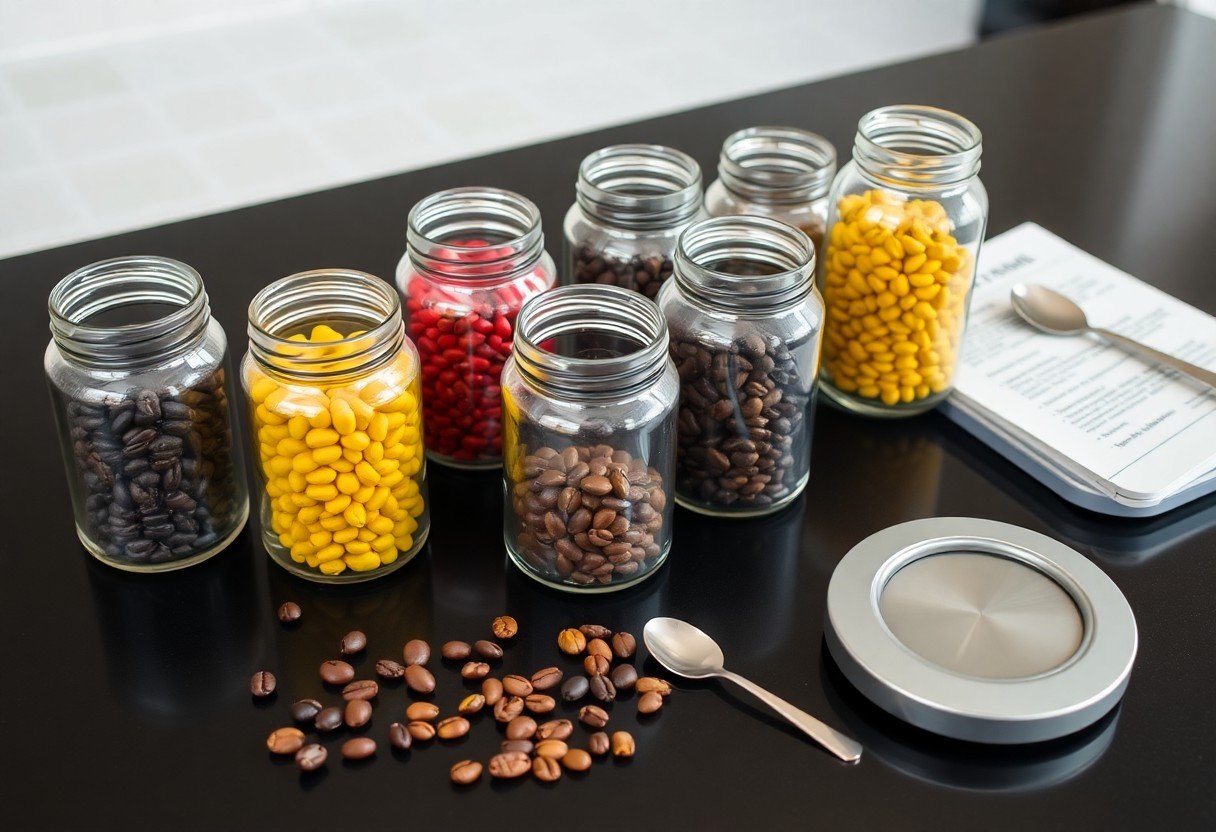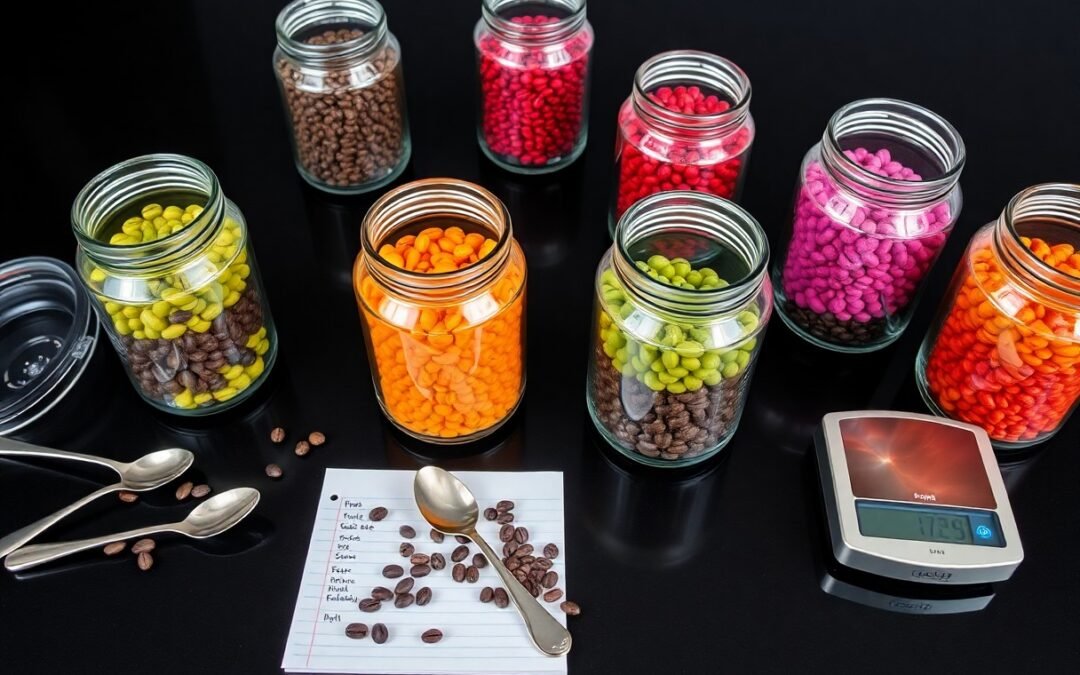Many coffee enthusiasts are captivated by the diverse flavor profiles that artisan coffee offers. In this exploration, you will uncover the most prevalent taste characteristics, from fruity and floral notes to rich and chocolatey undertones. Understanding these flavors not only enhances your appreciation of your brew but also helps you make more informed choices when selecting your beans. Dive into the world of artisan coffee to elevate your tasting experience and discover the nuances that make each cup unique.

The Flavor Spectrum: Understanding Coffee’s Unique Tastes
Delving into coffee’s flavor spectrum reveals an intricate array of profiles, influenced by diverse factors ranging from bean variety to geographical origin. Each coffee offers a unique taste experience, often characterized by primary flavors such as fruity, nutty, or chocolaty, combined with secondary notes that can present as floral, spicy, or earthy. Your palate will encounter an evolution of flavors from the first sip to the last, showcasing the complexity of artisan coffee’s craftsmanship.
The Role of Terroir
Terroir, the environmental factors affecting coffee growth, plays a significant role in shaping its taste. Soil composition, altitude, and climate all contribute to the bean’s characteristics. For instance, coffee grown at higher elevations often has a brighter acidity and more pronounced flavors due to the cooler growing conditions, allowing for slower maturation. Understanding terroir can deepen your appreciation for the nuances in flavor profiles specific to various coffee-growing regions.
The Impact of Processing Methods
The processing method significantly influences the final flavor of coffee, as it determines how beans are washed, fermented, and dried post-harvest. Each approach, including washed, natural, or honey processing, adds distinct qualities to the cup. For example, natural processing often leads to vibrant, fruity notes as the beans dry in the fruit’s mucilage, while washed processing typically yields a cleaner, more acidic cup. Exploring various processing methods can reveal a broad spectrum of flavors within the same coffee variety.
Different processing methods can transform your coffee experience remarkably. For example, Ethiopian coffees processed using the natural method can showcase berry-like sweetness and complex fruitiness, whereas Colombian coffees often highlight a balanced profile with crisp acidity when washed. Even slight variations in fermentation time or drying conditions can enhance or diminish specific flavors, making the interaction between processing and taste a fascinating aspect of gourmet coffee exploration. By tasting coffees processed in varied ways, you can discover how even small changes impact the overall flavor experience.
The Five Core Flavor Profiles of Artisan Coffee
Understanding the five core flavor profiles of artisan coffee helps you appreciate the nuances in each brew. These profiles—fruity and bright, nutty and sweet, chocolate and cocoa, spicy and earthy, and floral and herbal—each present unique characteristics that cater to diverse palates and preferences. By identifying these flavors, you can enhance your coffee experience and discover new favorite beans that resonate with your taste buds.
Fruity and Bright: A Taste of the Tropics
Fruity and bright flavors evoke the freshness of tropical fruits, offering vibrant notes of citrus, berry, and stone fruit. These coffees often delight your palate with a lively acidity that can make each sip invigorating. You’ll find these profiles predominantly in lighter roasts, where the natural bean characteristics shine through, delivering a burst of flavor reminiscent of sun-drenched landscapes.
Nutty and Sweet: Comfort in Every Sip
Nutty and sweet flavor profiles provide a comforting sensation, often characterized by notes of almond, hazelnut, and caramelized sugars. These coffees tend to have a smooth, mellow body, making them inviting for those who enjoy balance rather than boldness. You might find them in medium roasts, where the roasting process accentuates the inherent sweetness of the beans.
When exploring nutty and sweet coffees, consider beans sourced from regions like Brazil or Colombia. These areas are known for producing coffees with rich, nut-like undertones complemented by a subtle sweetness. A cup from such origins brings forth flavors reminiscent of warm cookies or freshly baked bread, creating a cozy atmosphere perfect for any occasion.
Chocolate and Cocoa: The Rich Depth of Flavor
Chocolate and cocoa profiles present a robust depth that envelops your senses, often featuring notes of dark chocolate, cocoa powder, or even fudge. These flavors are typically found in medium to dark roasts, where the beans’ natural oils and sugars caramelize during roasting, resulting in a sumptuous and indulgent experience.
Beans from regions like Central America and Africa often display pronounced chocolate notes. A coffee with this profile may remind you of sipping a rich mocha, providing a decadent experience that balances sweetness with slight bitterness. Pairing such coffees with desserts enhances their allure, turning each sip into a luxurious treat.
Spicy and Earthy: A Journey Through Complexity
Spicy and earthy flavors transport you on a complex journey, showcasing hints of clove, cinnamon, and even herbal spices. These coffees often have a full-bodied richness that engages you with their depth and warmth. The earthy tones can evoke a sense of groundedness, making each cup feel hearty and satisfying.
In regions like Sumatra and Ethiopia, beans often display robust spicy and earthy characteristics due to the growing conditions and processing methods. A sip of such coffee might remind you of sipping a warm chai latte, where layers of flavor unfold with every taste. This complexity invites you to savor each cup, encouraging exploration of its many dimensions.
Floral and Herbal: The Subtle Aromatics
Floral and herbal profiles enchant the senses with delicate aromas and flavors, often featuring notes of jasmine, lavender, and fresh herbs. These coffees are usually light-bodied, allowing the subtle complexity to shine through, captivating those who appreciate nuanced tastes.
Coffee sourced from regions like Ethiopia or Yemen often expresses these floral and herbal attributes, with a brewing method such as pour-over accentuating their complexity. Each cup can feel like a breath of fresh air, offering a soothing experience that lingers on the palate. This profile not only appreciates the beauty of coffee but also invites you to discover the artistry behind each origin.
Demystifying Coffee Cupping: How Flavor Profiles Are Identified
Coffee cupping serves as an necessary method for identifying the distinct flavor profiles in artisan coffee. This systematic practice allows you to evaluate the aroma, taste, and aftertaste, revealing the complexities of each brew. By following a consistent process, you can discern nuanced flavors that contribute to the overall experience of the coffee. Through cupping, any coffee’s unique traits come to life, providing a baseline for connoisseurs and roasters alike.
The Cupping Process Explained
The cupping process begins with measuring and grinding coffee beans to a uniform consistency. You’ll typically use about 8 grams of coffee per 150 ml of water, ensuring a balance in flavor extraction. Boiling water is poured over the grounds, and after steeping for about four minutes, you gently break the crust of coffee to release its aromatic compounds. This step is pivotal, as it unveils the coffee’s true essence, allowing you to engage your senses fully before tasting.
Tasting Notes: What To Look For
When tasting coffee, focus on identifying specific flavor notes, mouthfeel, acidity, and body. Pay close attention to how these elements interact with one another. Are there hints of fruitiness or chocolate? Does the coffee feel smooth or gritty on your palate? The balance between sweetness and bitterness also plays a significant role in flavor perception. Every cupping session provides a new opportunity to hone your skills, leading you to deeper coffee appreciation.
In capturing the essence of each brew, honing in on tasting notes such as citrus, floral, or nutty profiles can greatly enhance your experience. You might discern bright acidity reminiscent of ripe berries or a rich, chocolatey undertone that adds depth. The body of the coffee can range from light and delicate to full and syrupy, influencing how it feels in your mouth. By practicing cupping regularly, you’ll enhance your ability to articulate these tasting notes, elevating your coffee-tasting journey immensely.
Evolution of Flavor Trends: Artisan Coffee’s Growing Palette
Your palate for coffee flavor profiles has expanded significantly in recent years, much like the brewing methods used by artisan roasters. Emerging trends are reshaping how you experience coffee, highlighting the importance of sourcing and preparation. Over the past decade, the focus has shifted from mass-produced blends to a more nuanced appreciation of diverse origins, encouraging a greater exploration of the complex flavor spectrum available in each cup.
The Rise of Single-Origin Coffees
You may have noticed the growing popularity of single-origin coffees, which offer an opportunity to savor the unique characteristics of beans sourced from specific regions or even individual farms. These coffees often showcase distinctive flavors tied to their terroir, including fruity, floral, or spicy notes, allowing you to experience the essence of each locale without interference from blending. This trend has not only heightened consumers’ awareness of origin but also fostered a deeper connection to the farmers and communities behind each brew.
Experiments with Flavor Infusions and Blends
Coffee enthusiasts are increasingly drawn to innovative flavor infusions and blends, which break traditional boundaries. Roasters infuse coffees with flavors such as vanilla, chocolate, or even exotic spices, creating unique, layered tasting experiences. These experiments cater to evolving consumer preferences for diversity and variety, transforming your coffee ritual into an adventurous journey.
In recent years, some artisan coffee brands have pushed the envelope further by incorporating ingredients like citrus peels, bourbon barrels, or even spices like cardamom during the roasting process. This not only enhances the coffee’s complexity but can also evoke memories linked to other culinary experiences. Limited releases featuring these bold infusions sell out quickly, demonstrating your appetite for novel flavors. As roasters continue to explore unconventional pairings and methods, expect the landscape of artisan coffee to evolve, offering you exciting new tastes and aromas to discover.

The Future of Artisan Coffee Flavors: Innovations on the Horizon
As the coffee industry evolves, new innovations promise to reshape flavor experiences for consumers. Technologies like sensory analysis and artificial intelligence are paving the way for more precise flavor profiling, allowing roasters to enhance their blends collaboratively with growers. Additionally, new fermentation methods, such as anaerobic processing, are emerging, pushing the boundaries of traditional coffee flavor extraction. These advancements will likely lead to exciting, uncharted taste territories that will redefine what artisan coffee means.
Sustainability and Flavor Discovery
Emphasizing sustainable practices not only benefits the environment but also enhances flavor diversity. By supporting regenerative farming methods, you can explore unique flavor profiles emerging from various soil types and microclimates. Many producers are also experimenting with heirloom varieties, which often yield distinct taste characteristics while promoting biodiversity. This shift towards sustainability allows you to enjoy coffee with a story behind its production, revealing flavors closely tied to its origin.
Advances in Brewing Techniques
Your brewing method significantly influences the final flavor profile of your coffee. Recent innovations, such as smart brewers that measure variables like temperature and time, allow for precise control, resulting in a more consistent cup. Additionally, new extraction technologies, like cold brew or nitro infusion, provide fresh alternatives to traditional methods, creating unique flavor experiences that appeal to a wide range of palates.
Smart brewing techniques offer you the ability to craft personalized coffee experiences at home or in cafes. For instance, precision pour-over systems can adjust flow rates and temperatures based on specific bean characteristics, enhancing flavor extraction. Nitro coffee, with its creamy texture, introduces a distinct mouthfeel and smoother taste, while cold brew’s lower acidity often brings out sweetness and floral notes in particular beans. These advancements not only cater to diverse preferences but also inspire creativity in brewing practices, ultimately enriching your coffee journey.
Conclusion
Taking this into account, understanding the common flavor profiles in artisan coffee enhances your tasting experience. By familiarizing yourself with the various notes such as fruity, nutty, and chocolaty, you can better appreciate the complexities of each brew. This awareness not only refines your palate but also informs your coffee selections, allowing you to seek out flavors that resonate with your personal preferences. As you continue exploring, you can deepen your appreciation for artisan coffee and elevate your enjoyment levels significantly.
FAQ
Q: What are the primary flavor profiles found in artisan coffee?
A: The primary flavor profiles include fruity, chocolatey, nutty, floral, and spicy. Each profile can vary based on the origin of the coffee beans, the processing method, and the roast level.
Q: How does origin impact the flavor profile of artisan coffee?
A: The origin of the coffee beans significantly influences their flavor. For example, coffees from Central America often showcase bright acidity and citrus notes, while beans from Ethiopia might present more floral and fruity flavors.
Q: What processing methods affect flavor profiles in coffee?
A: Common processing methods such as washed, natural, and honey affect flavor by altering the interaction of the beans with their fruit. Natural processed coffees tend to be fruitier, while washed coffees often have cleaner, more vibrant flavors.
Q: How do roast levels change the flavor profiles in artisan coffee?
A: Lighter roasts typically retain more of the beans’ original flavor characteristics, highlighting fruity and floral notes. Darker roasts develop deeper, more bitter flavors, often bringing out chocolatey or smoky profiles.
Q: Can flavor profiles be influenced by brewing methods?
A: Yes, brewing methods such as pour-over, French press, or espresso can enhance or mute certain flavors. For example, a pour-over method may emphasize brightness and clarity, while a French press might enhance body and richness.

